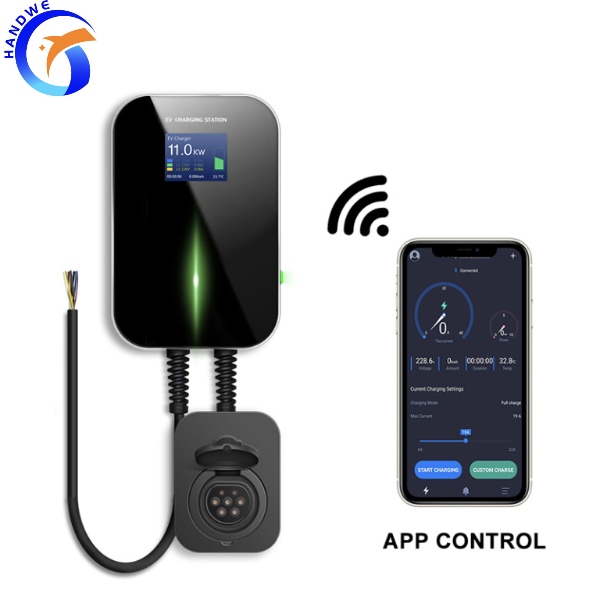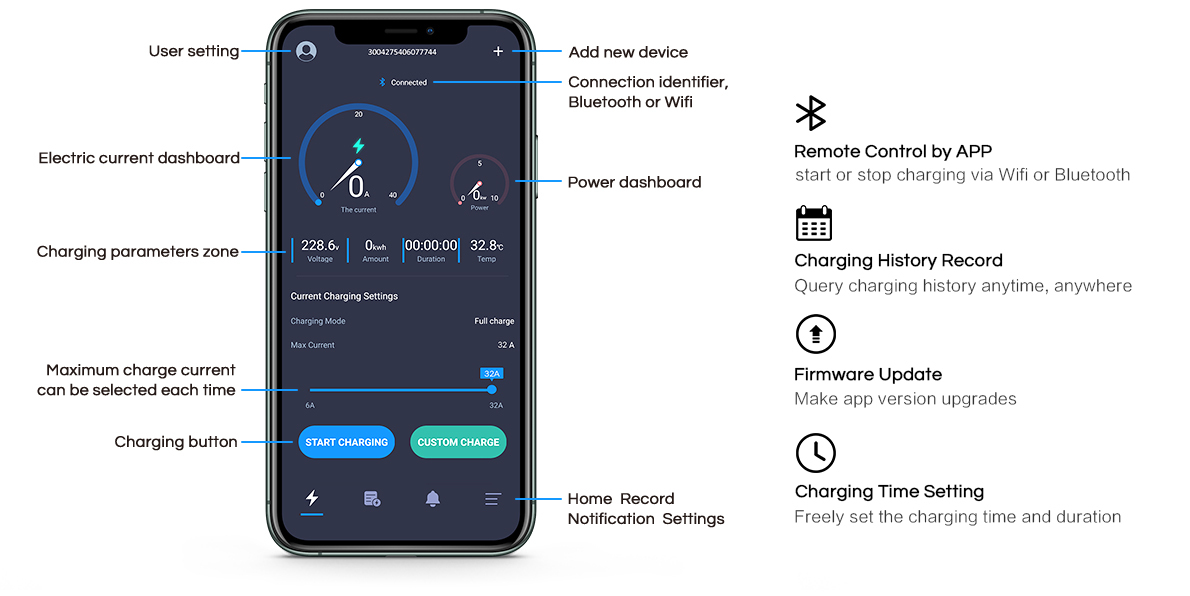hotline Tel
Home charging is the most important charging method for new energy electric vehicles. It usually uses AC charging piles, which is what we call slow charging. In the actual charging process, various charging problems will be encountered due to the limitation of the power distribution environment or the unfamiliarity with the performance of new energy electric vehicles.

Since I work in the field of new energy charging equipment, I will sort out the most common problems I encounter as follows:
1. How long does it take for a new energy electric vehicle to be fully charged?
2. Plug in the charging gun, but it cannot be charged, what should I do?
3. How to check the charging information such as charging capacity and charging power?
If you also have questions about these problems during the charging process, this article may be able to provide you with some references.
1. How long does it take for a new energy electric vehicle to be fully charged?
There is a simple formula for the charging time of new energy electric vehicles:
Charging Time = Battery Capacity / Charging Power
According to this formula, we can roughly calculate how long it will take to fully charge.
In addition to battery capacity and charging power, which are directly related to charging time, balanced charging and ambient temperature are also common factors that affect charging time.
1. Battery capacity
Battery capacity is one of the important indicators to measure the performance of new energy electric vehicles. Simply put, the larger the battery capacity, the higher the pure electric cruising range of the car, and the longer the required charging time; the smaller the battery capacity, the lower the pure electric cruising range of the car, and the shorter the required charging time.
The battery capacity of pure electric new energy vehicles is usually between 30kWh and 100kWh.
example:
① The battery capacity of Chery eQ1 is 35kWh, and the battery life is 301 kilometers;
② The battery capacity of the battery life version of the Tesla Model X is 100kWh, and the cruising range also reaches 575 kilometers.
The battery capacity of a plug-in new energy hybrid vehicle is relatively small, generally between 10kWh and 20kWh, so its pure electric cruising range is also low, usually 50 kilometers to 100 kilometers.
For the same model, when the vehicle weight and motor power are basically the same, the larger the battery capacity, the higher the cruising range.
The BAIC New Energy EU5 R500 version has a battery life of 416 kilometers and a battery capacity of 51kWh. The R600 version has a battery life of 501 kilometers and a battery capacity of 60.2kWh.

2. Charging power
Charging power is another important indicator that determines the charging time. For the same car, the greater the charging power, the shorter the charging time required. The actual charging power of the new energy electric vehicle has two influence factors: the maximum power of the charging pile and the maximum power of the AC charging of the electric vehicle, and the actual charging power takes the smaller of these two values.
A. The maximum power of the charging pile
Common AC charging pile powers are 3.5kW and 7kW, the maximum charging current of 3.5kW charging pile is 16A, and the maximum charging current of 7kW charging pile is 32A.
B. Electric vehicle AC charging maximum power
The maximum power limit of AC charging of new energy electric vehicles is mainly reflected in three aspects.
① AC charging port
Specifications for the AC charging port are usually found on the EV port label. For pure electric vehicles, part of the charging interface is 32A, so the charging power can reach 7kW. There are also some pure electric vehicle charging ports with 16A, such as Dongfeng Junfeng ER30, whose maximum charging current is 16A and power is 3.5kW.
Due to the small battery capacity, the plug-in hybrid vehicle is equipped with a 16A AC charging interface, and the maximum charging power is about 3.5kW. A small number of models, such as the BYD Tang DM100, are equipped with a 32A AC charging interface, and the maximum charging power can reach 7kW (about 5.5kW measured by riders).
② Power limitation of on-board charger
When using AC charging piles to charge new energy electric vehicles, the main functions of AC charging piles are power supply and protection. The part that does power conversion and converts alternating current into direct current for charging the battery is the on-board charger. The power limitation of the on-board charger will directly affect the charging time.
For example, BYD Song DM uses a 16A AC charging interface, but the maximum charging current can only reach 13A, and the power is limited to about 2.8kW~2.9kW. The main reason is that the on-board charger limits the maximum charging current to 13A, so even though the 16A charging pile is used for charging, the actual charging current is 13A and the power is about 2.9kW.
In addition, for safety and other reasons, some vehicles can set the charging current limit through the central control or mobile APP. Such as Tesla, the current limit can be set through the central control. When the charging pile can provide a maximum current of 32A, but the charging current is set at 16A, then it will be charged at 16A. Essentially, the power setting also sets the power limit of the on-board charger.
To sum up: the battery capacity of the model3 standard version is about 50 KWh. Since the on-board charger supports a maximum charging current of 32A, the main component that affects the charging time is the AC charging pile.
3. Equalizing Charge
Balanced charging refers to continuing to charge for a period of time after the general charging is completed, and the high-voltage battery pack management system will balance each lithium battery cell. Balanced charging can make the voltage of each battery cell to be basically the same, thereby ensuring the overall performance of the high-voltage battery pack. The average vehicle charging time may be about 2 hours.
4. Ambient temperature
The power battery of the new energy electric vehicle is a ternary lithium battery or a lithium iron phosphate battery. When the temperature is low, the movement speed of lithium ions inside the battery decreases, the chemical reaction slows down, and the battery vitality is poor, which will lead to prolonged charging time. Some vehicles will heat the battery to a certain temperature before charging, which will also prolong the charging time of the battery.
It can be seen from the above that the charging time obtained from the battery capacity/charging power is basically the same as the actual charging time, where the charging power is the smaller of the power of the AC charging pile and the power of the on-board charger. Considering the equilibrium charging and charging ambient temperature, the deviation is basically within 2 hours.